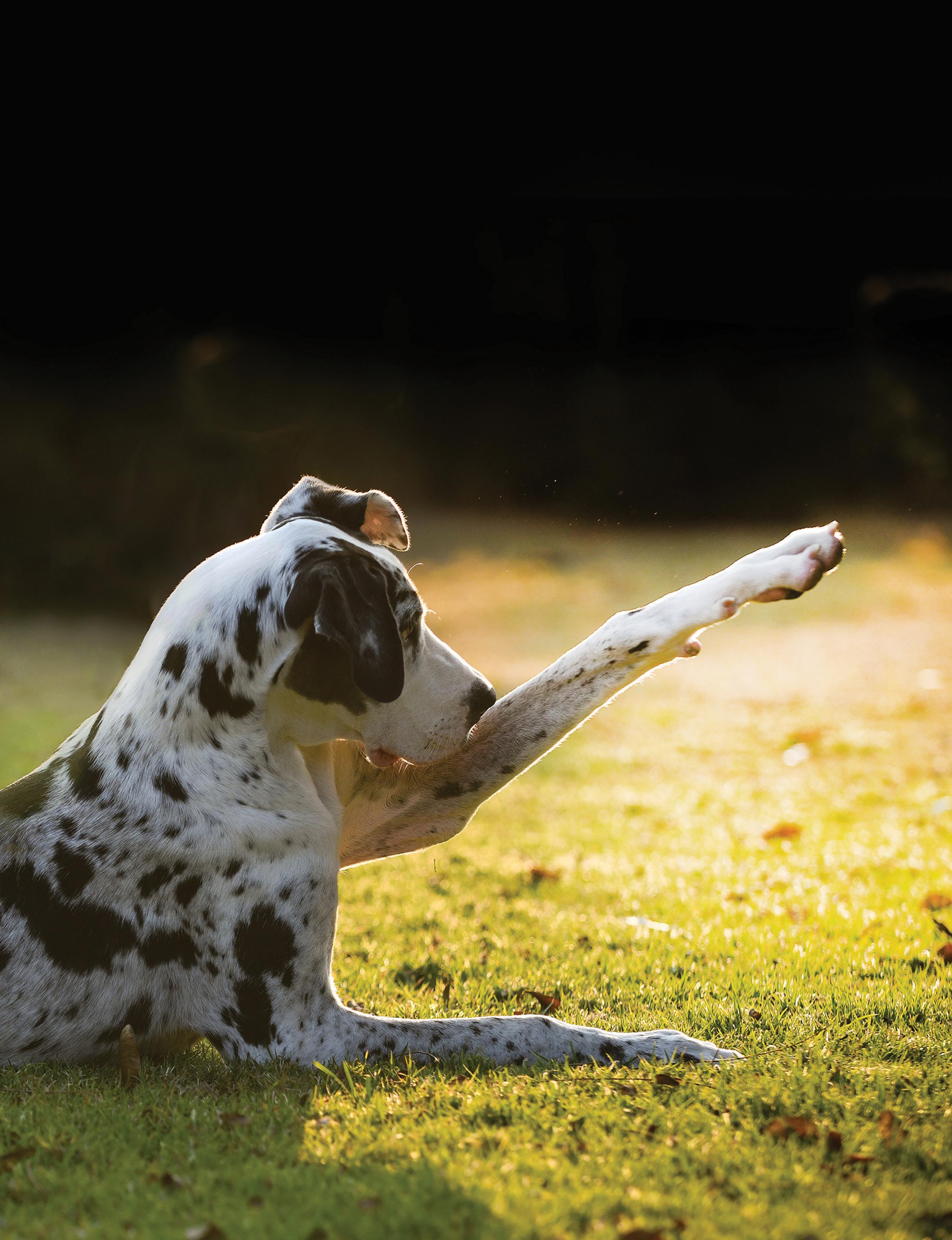

CHOOSE AWARD WINNING RAW PET FOOD JOHANNESBURG | PRETORIA | CAPE TOWN | GARDEN ROUTE | DURBAN www.paleopetpure.com & Services Pet Products awards 2023 LUXlifeMAGAZINE TEPWARTSEB F OOD MANUFACTURERSOUT H ACIRFA
Welcome!
It’s great to have you back for Issue 9B of your favourite dog magazine ;)
We’re covering PLENTY of topics this month including ear health, managing excessive barking, the best breeds for allergic parents and the importance of obedience training, to name just a few.
Our breed profile features the adorable Brussels Griffon and our favourite description of the breed undoubtedly comes from the American Kennel Club who state:
“This humanlike toy of complex character has enough personality for ten ordinary dogs. A sensitive companion for discerning grown-ups, the Brussels Griffon is smart, devoted and comically self-important. […] He has the air of a worldly, Frenchspeaking philosopher.”
This is a breed that you’ll want to read about, so without further ado, we’ll let you dive in.
Until next time!
Dr Lizzie Harrison | Editor
DQ | 8C 3
| Anne
Designer
Royden-Turner
xxx
Lizzie and the DQ team
CONTENTS
Brussels Griffon
The charismatic companion
The growing concern
Tackling the obesity epidemic in dogs
Fight the sneeze
The best dog breeds for allergy sufferers
Hear, hear!
Understanding and managing ear health problems in dogs
DIY dog grooming
Essential tips and tricks for at-home care
Mastering the basics
The importance of obedience training for dogs
Barking mad
How to train your dog to reduce excessive barking
Ask DQ
Your questions answered
Products we love
DQ | 8C 4 DIGITAL ISSUE 9B | 2024


DQ | 8C 6
BREED PROFILE
Brussels Griffon
THE CHARISMATIC COMPANION
DQ | 8C 7
BREED PROFILE
The Brussels Griffon, known affectionately as the 'Griff', is a small breed with a big personality. Originating from Brussels, Belgium, this breed combines charm and intelligence in an 'oh so loveable' face, making them ideal companions for those who appreciate a petite dog with character and liveliness.
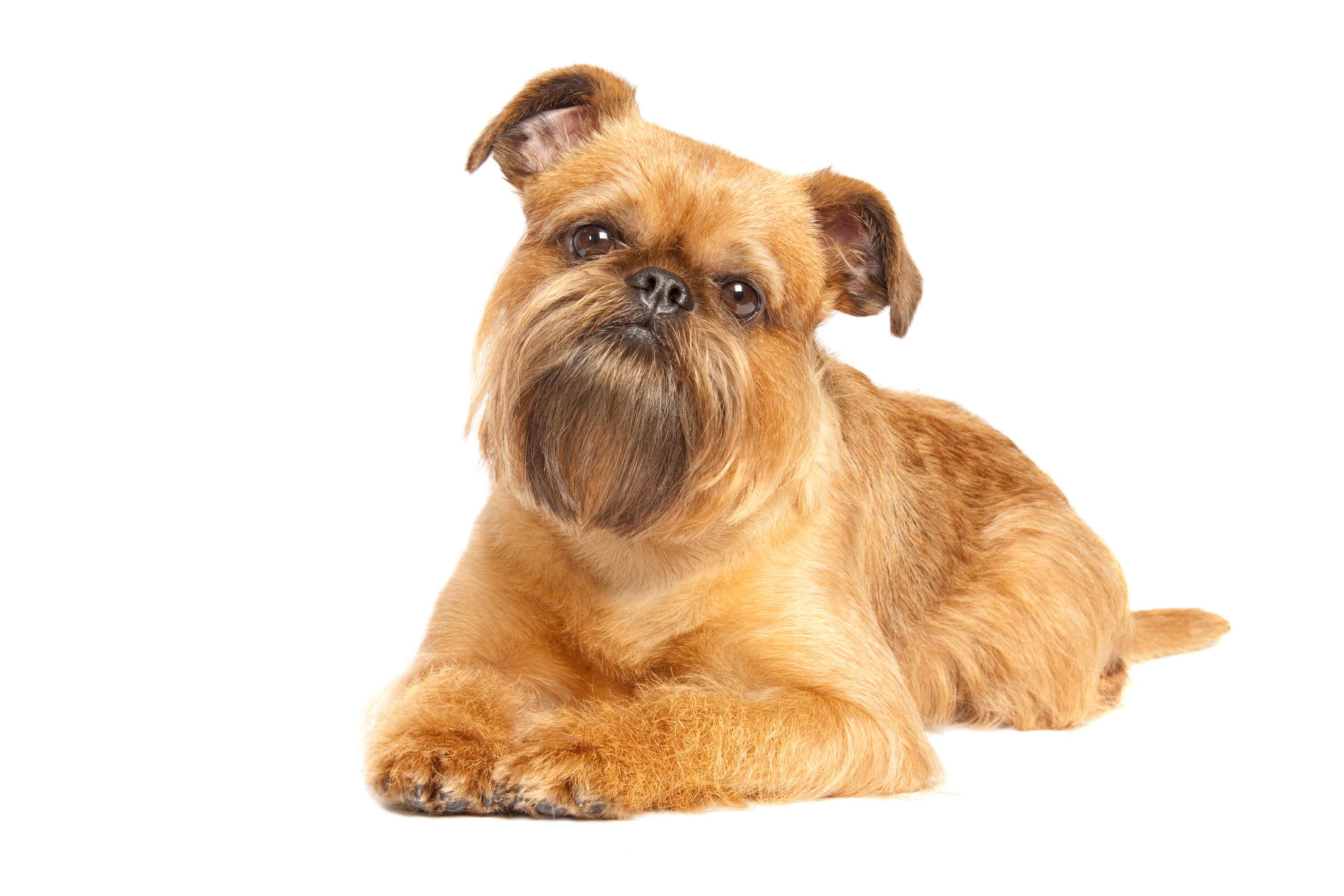
DQ | 8C 8
BREED PROFILE

HISTORY
The Brussels Griffon's roots trace back to the 19th century in Brussels, Belgium, where they were initially bred from the Belgian street dog (Griffons d'Ecurie) and the Affenpinscher. The primary role of these early Griffs was to hunt and kill rats in stables. Over time, they caught the eye of the nobility and gradually transitioned from ratters to refined companion dogs. Queen Marie Henriette of Belgium took a particular liking to the breed in the late 1800s, significantly boosting its popularity across Europe and later in the United States.
DQ | 8C 9 BREED PROFILE
PHYSICAL CHARACTERISTICS
The Brussels Griffon stands about 18 to 25 centimetres tall and weighs anywhere from 2.5 to 5.5kg. The breed is known for its distinctive and super expressive face, thanks to his large, round, 'almost human' eyes and undershot jaw. The Griffon comes in two coat types: rough and smooth. The rough-coated variety, with its distinctive beard and wiry coat, is more common than the smooth-coated type, which has a shorter, glossy coat (like a pug). Standard colours include red, black, chocolate, and black and tan. The Griff's body is thickset, and he moves with the purposeful trot of a dog that knows exactly what he wants.

NOTE
Although these dogs are playful and energetic, their sensitivity and small stature make them a poor choice for children.
BREED PROFILE DQ | 8C 10

BREED PROFILE DQ | 8C 11

TEMPERAMENT
Brussels Griffons are known for their spunky and affectionate nature. They are highly intelligent and easily trained but can have a stubborn streak. The American Kennel Club says the following:
"This humanlike toy of complex character has enough personality for ten ordinary dogs. A sensitive companion for discerning grown-ups, the Brussels Griffon is smart, devoted, and comically self-important. […] He has the air of a worldly, Frenchspeaking philosopher."
Griffs make excellent watchdogs, as they are always alert and wary of strangers. Despite their small size, they have a big bark and will not hesitate to use it. However, they are also known for being particularly attached to their owners, often following them around the house with adoring eyes.
DQ | 8C 12
PROFILE
BREED
CARE
The Brussels Griffon requires regular grooming, especially the rough-coated variety, which needs brushing several times a week to prevent matting and maintain the coat's condition. As rough-coated Griffons do not shed, they normally need regular visits to the groomer. Most have their hair, except for their distinctive beard, clipped quite short. Smooth-coated Griffons are much easier to manage from a grooming perspective, requiring weekly brushing during shedding season.
NOTE
Brussels Griffons can be sensitive to extreme temperatures, so keeping them comfortable during hot or cold weather is important.
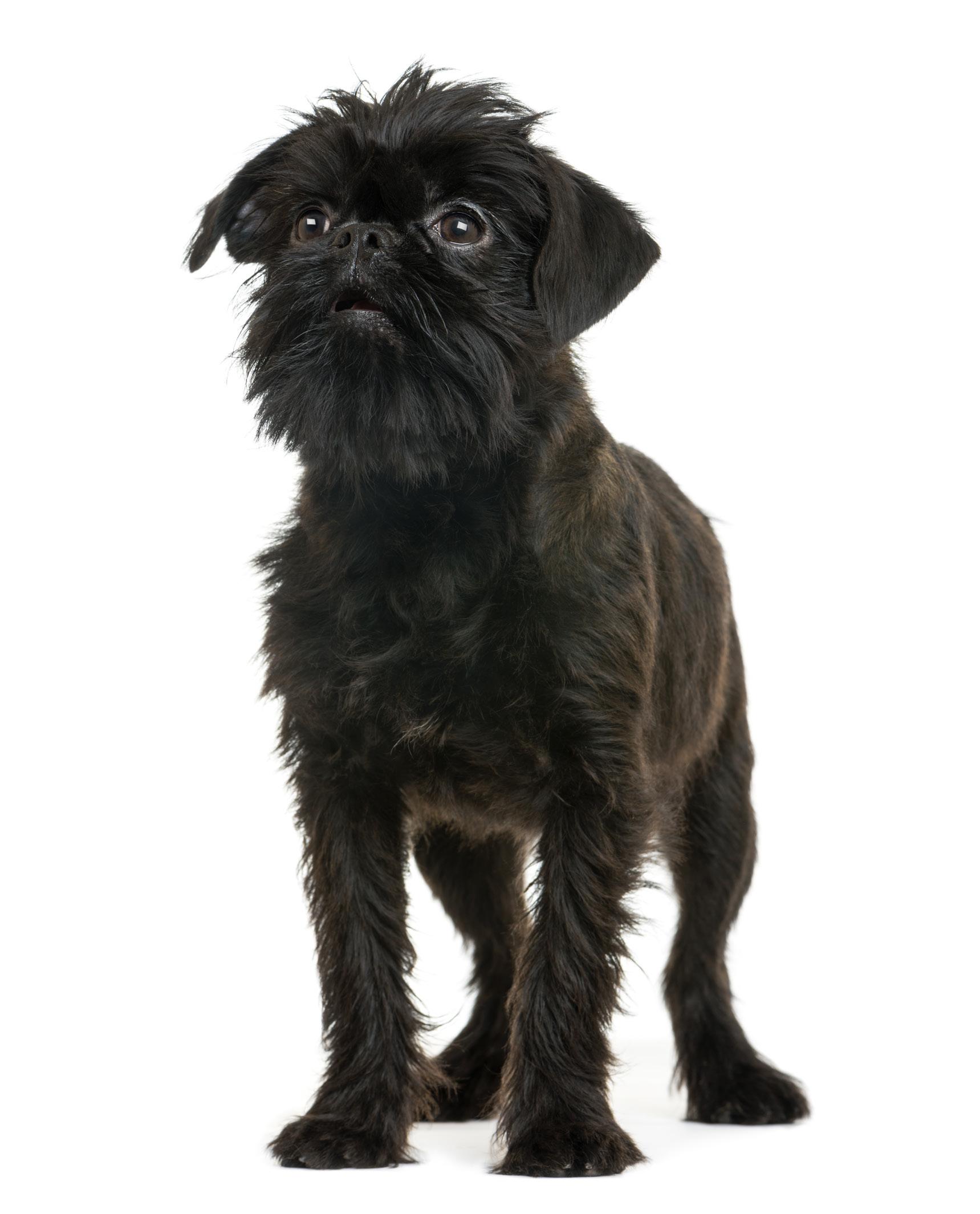
DQ | 8C 13 BREED PROFILE
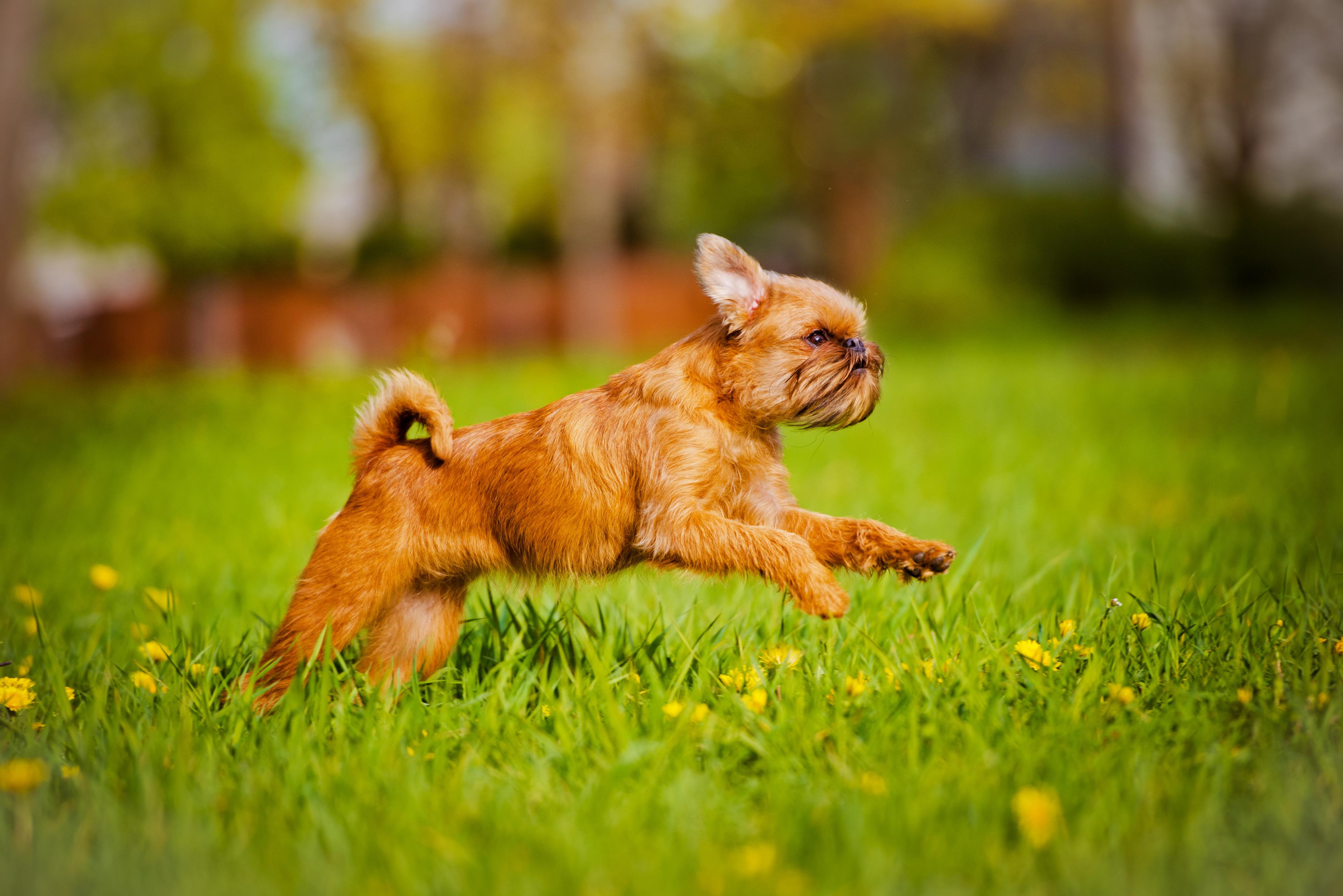
Griffons are adaptable to both apartment living and homes with yards as long as they get daily exercise to burn off their energy. However, they do not tolerate being left alone for long periods, which must be considered when taking on one of these tiny troopers. BREED
DQ | 8C 14
PROFILE

HEALTH
Brussels Griffons are generally healthy, but like all breeds, they can be prone to certain health issues. These may include eye problems, such as cataracts and glaucoma, respiratory issues in the flat-faced (brachycephalic) varieties, heart conditions, patella luxation, and hip dysplasia. Their lifespan is typically 12-15 years, with proper care and regular veterinary check-ups to manage potential health problems.
DQ | 8C 15 BREED PROFILE
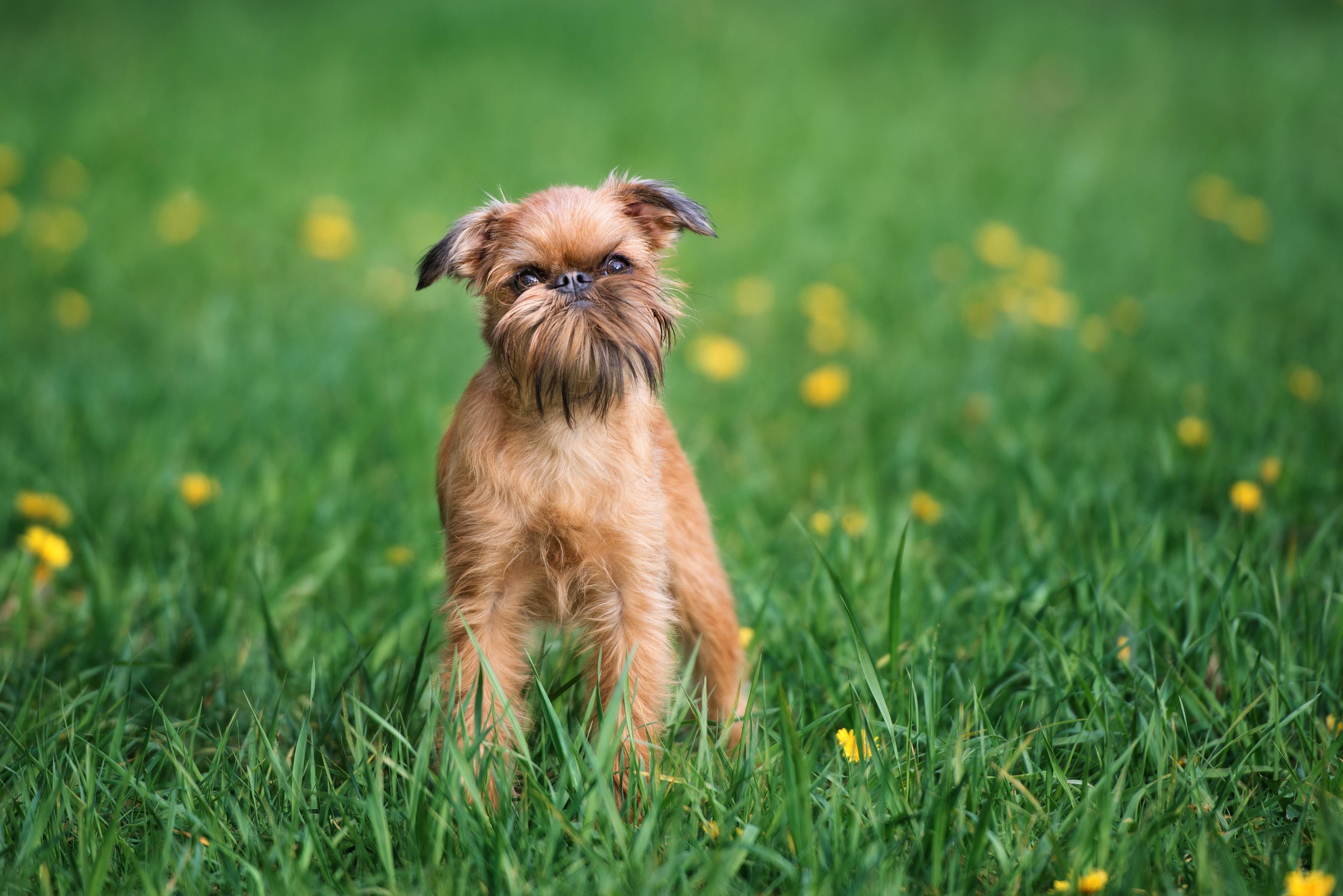
DQ | 8C 16
BREED PROFILE
FINAL THOUGHTS
The Brussels Griffon is a delightful companion for anyone willing to deal with a bit of a diva in terms of grooming and attention needs. They are suited to various lifestyles, from city dwellers to those with ample living space, provided you are home to spend time with them. Affectionate, lively, and occasionally somewhat comical, the Griff makes a loyal companion if you are willing to give him the love and attention he thrives on.

DQ | 8C 17
BREED PROFILE


18 DOG HEALTH
TACKLING THE OBESITY EPIDEMIC IN DOGS

Obesity in dogs is a rapidly growing concern, mirroring the trends observed in human populations. Recent studies indicate that over half of dogs in some regions are overweight or obese. This condition not only diminishes the quality of life but also predisposes our canine companions to a myriad of health issues, including diabetes, heart disease, and joint problems. Understanding the causes, consequences, and corrective measures is crucial for dog owners to prevent and manage obesity effectively.
ASSESSING OBESITY
Vets use various methods to assess a dog's body condition and determine whether he is underweight, overweight, or at an ideal weight. The most common method is the Body Condition Score (BCS).
DQ | 8C 19 DOG HEALTH
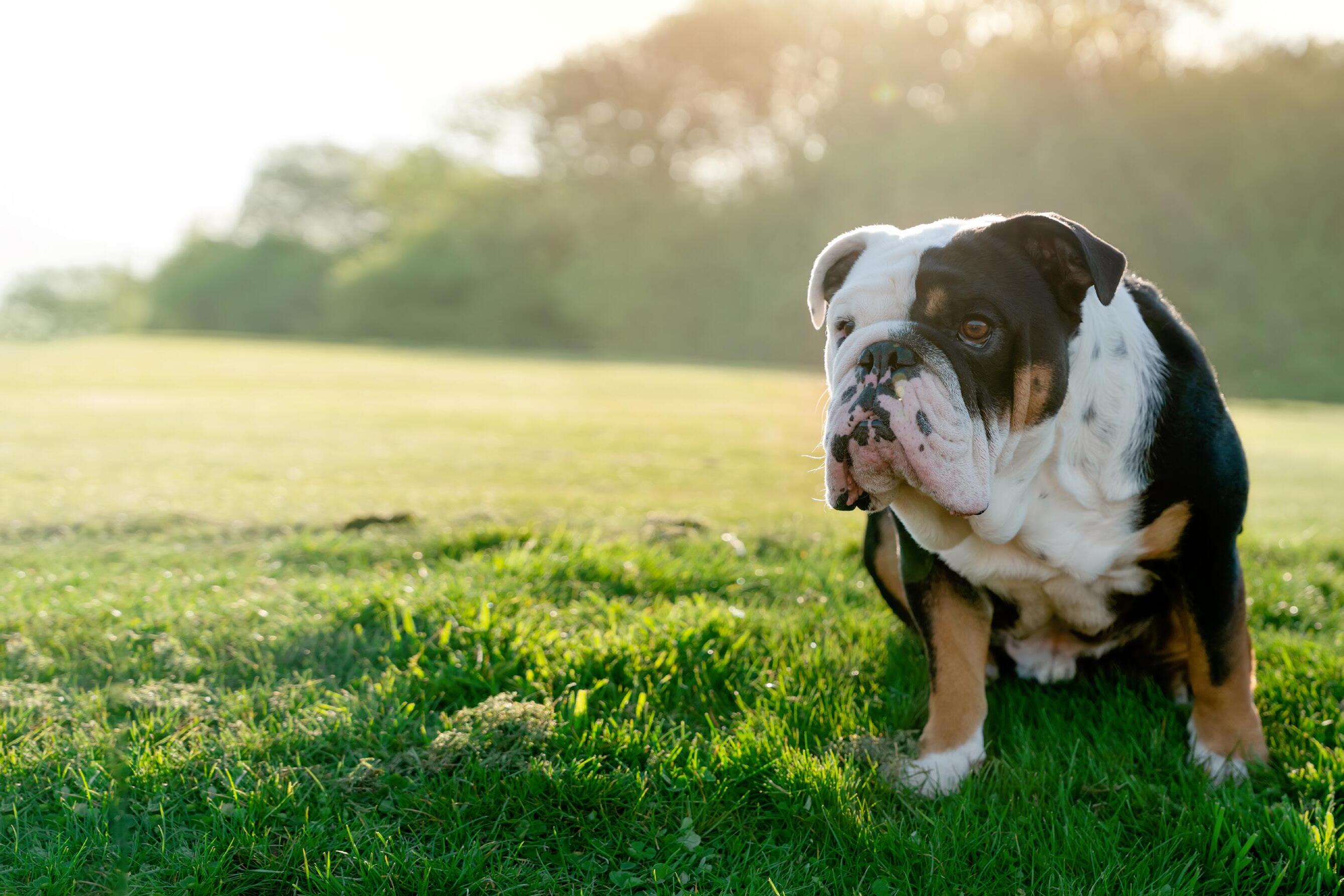
BODY CONDITION SCORE (BCS)
The Body Condition Score is a visual and palpable assessment tool that evaluates the amount of fat on a dog's body. It typically ranges from 1 to 9, with 1 indicating that a dog is severely underweight and 9 showing that a dog is severely overweight. An ideal score is around 4 to 5, indicating the dog has an ideal body weight. Here's what the scoring typically involves:
• 1-3: The dog is underweight (bones such as ribs, spine, and pelvic bones are easily visible).
• 4-5: Ideal weight (ribs and spine are palpable without excess fat covering,
waist observed behind the ribs when viewed from above).
• 6-9: Overweight to obese (increased fat deposits over the chest, spine, and base of the tail; belly sagging; absence of a visible waist).
USING THE TOOL
Veterinarians typically use this scoring system during regular checkups to monitor a dog's health and ensure they maintain a healthy weight. The score helps guide dietary adjustments, exercise levels, and overall care strategies to promote optimal health.
DQ | 8C 20 DOG HEALTH

NOTE: IMPORTANCE OF REGULAR ASSESSMENTS
Regularly assessing a dog's body condition is crucial because weight changes can indicate health problems. Excess weight can lead to joint problems, diabetes, and heart disease while being underweight might suggest malnutrition or underlying health issues.
DQ | 8C 21 DOG HEALTH
CAUSES OF OBESITY
The primary cause of obesity in dogs is an imbalance between calorie intake and energy expenditure. Factors contributing to this imbalance include:
• Overfeeding: Providing too many calories, often through excessive portions, frequent treats, or table scraps.
• Lack of exercise: Many dogs do not receive adequate daily physical activity to burn off the calories they consume.
• Breed predisposition: Some breeds, such as Labrador Retrievers, Pugs, and Bulldogs, are genetically predisposed to obesity.
• Age and Neutering: Older dogs and those who have been spayed or neutered tend to have slower metabolisms, which can contribute to weight gain.

DQ | 8C 22 DOG HEALTH

HEALTH RISKS
Obesity can significantly impact a dog's health and lead to various medical issues, including:
• Joint disorders: Excess weight puts additional strain on joints, leading to osteoarthritis and decreased mobility.
• Respiratory complications: Overweight dogs often struggle with
breathing difficulties, especially during exercise or in hot weather.
• Diabetes: Just like in humans, obesity can lead to type 2 diabetes in dogs, requiring lifelong management.
• Reduced lifespan: Studies have shown that obese dogs may have shorter lifespans than their healthier counterparts.
DQ | 8C 23 DOG HEALTH

PREVENTING AND MANAGING CANINE OBESITY
Combating obesity requires a multifaceted approach, focusing on diet, exercise, and regular veterinary care.
1. Diet management:
• Consult a vet to determine the appropriate calorie intake based on the dog's breed, age, weight, and activity level.
• Measure meals using precise quantities and resist the urge to overfeed.
• Choose high-quality dog food that meets nutritional needs without excessive calories.
• Limit treats and avoid feeding table scraps.
2. Increasing exercise:
• Incorporate regular exercise into the dog's routine, such as daily walks, play sessions, and other activities encouraging movement.
• Gradually increase the duration and intensity of exercise to prevent injuries, especially if the dog is not used to being active.
DQ | 8C 24
DOG HEALTH
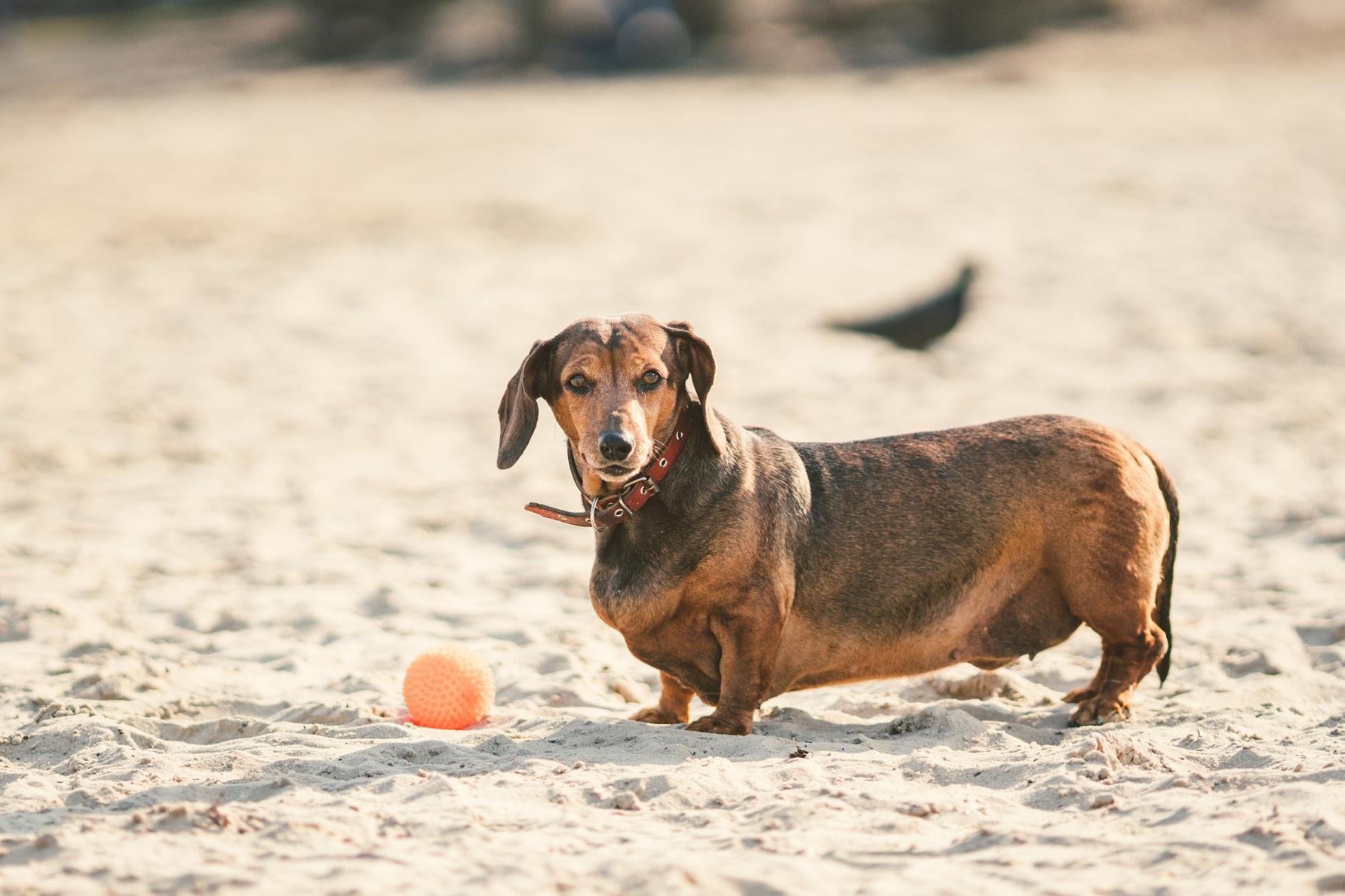
3. Regular veterinary check-ups:
• Schedule regular check-ups with a vet to monitor the dog's weight and overall health.
• Discuss weight management strategies and adjust them as needed based on the dog's progress and health status.
4. Education and awareness:
• Educate dog owners about the risks of obesity and the importance of maintaining a healthy weight for their pets.
• Encourage responsible pet ownership, including proper diet, exercise, and care.
CONCLUSION
Obesity in dogs is a preventable condition that requires awareness, commitment, and proactive management from dog owners. By understanding the causes and consequences of obesity and implementing effective preventative measures, owners can ensure their pets lead healthier, happier, and potentially longer lives.
DQ | 8C 25 DOG HEALTH
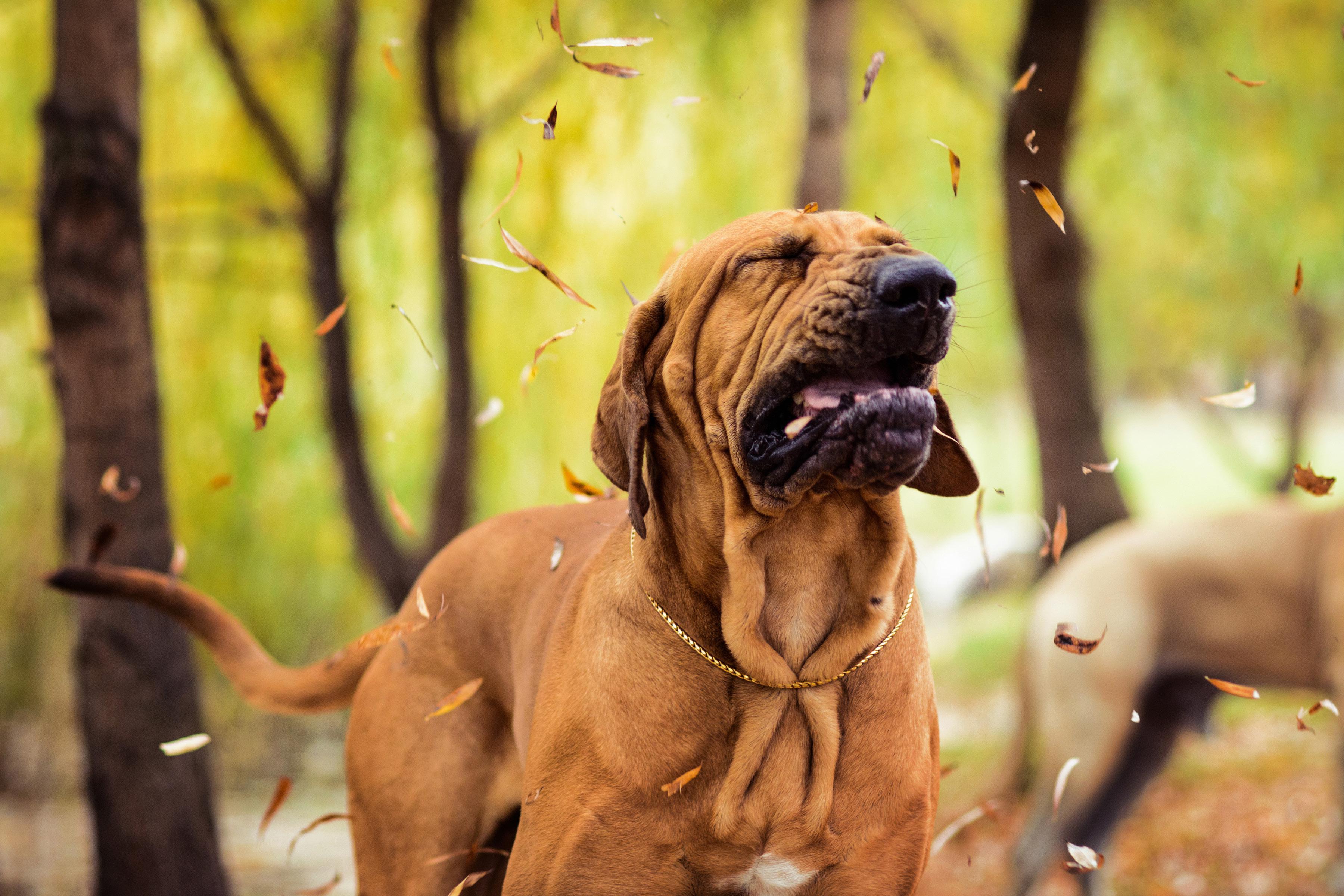
FIGHT THE SNEEZE
DQ | 8C 26 DOG HEALTH

THE BEST DOG BREEDS FOR ALLERGY SUFFERERS
DQ | 8C 27 DOG HEALTH
For many, the joy of owning a dog is often overshadowed by the unpleasant symptoms of pet allergies. Symptoms like sneezing, itchy eyes, and even asthma can make pet ownership challenging for allergy sufferers. However, certain dog breeds are known to be more suitable for those with allergies, thanks to their unique coat types and shedding patterns. These breeds are often referred to as 'hypoallergenic' dogs, although it's important to note that no dog breed is completely hypoallergenic.
CHARACTERISTICS OF A HYPOALLERGENIC DOG
A hypoallergenic dog is one who is less likely to trigger allergic reactions in people who are sensitive to dander, hair, or other allergens associated with dogs. These dogs generally have some or all of the following characteristics.
1. Less shedding: Hypoallergenic dogs typically shed less fur and dander than other breeds, which means fewer allergens are released into the environment.
2. Hair type: Many hypoallergenic breeds have hair that grows continuously, similar to human hair, rather than fur that grows to a certain length and then sheds. These breeds often require regular grooming to prevent their hair from matting and to manage shedding.
3. Size: Smaller dogs generally spread fewer allergens due to their size, although this is not always a reliable indicator.
Here's a look at some of the best dog breeds for people suffering from allergies and why they might be a good fit.
DQ | 8C 28 DOG HEALTH

1
POODLE (TOY, MINIATURE, AND STANDARD)
Poodles of all sizes are famed for their intelligence and curly, dense coats, which shed very minimally. Their hair, which is more similar to human hair than traditional fur, traps dander - the common allergen found in dog saliva and skin.
Regular grooming keeps the dander to a minimum, making Poodles an excellent choice for allergy sufferers.
DQ | 8C 29 DOG HEALTH

TWO
BICHON FRISE
Known for their gentle manner and small size, Bichon Frises have a fluffy, double-layered coat that is highly curly, helping to reduce the spread of dander and hair. They are also very friendly and adapt well to various living conditions, making them ideal for families and individuals alike.
DQ | 8C 30 DOG HEALTH
THREE
PORTUGUESE WATER DOG
Portuguese water dogs, made famous by their presence in the White House, have a waterproof coat that is either curly or wavy. This breed is known for minimal shedding and is often recommended for allergy sufferers who want an energetic and affectionate medium to large dog.

DQ | 8C 31 DOG HEALTH
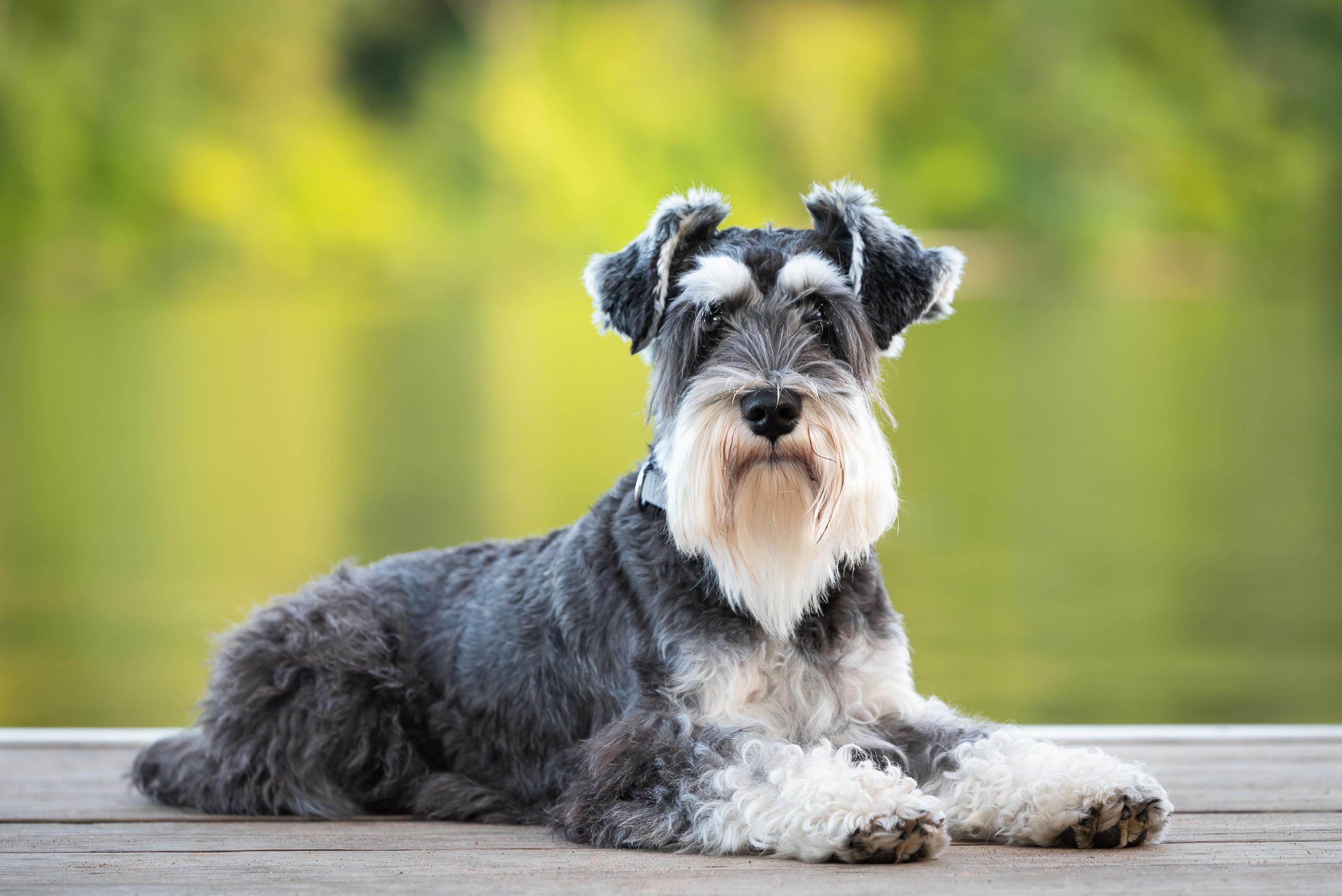
Schnauzers have a distinctive double coat consisting of a wiry outer coat and a soft undercoat. This breed sheds very little, and regular grooming can help minimise allergic reactions. Schnauzers are also known for their robust health and spirited personality. 4
SCHNAUZER (MINIATURE, STANDARD, AND GIANT)
DQ | 8C 32 DOG HEALTH


MALTESE
The Maltese breed has long, silky hair that sheds very little. They are a small breed, making them a good choice for apartment living. Their hair, like the Poodle's, grows continuously and requires regular grooming to prevent matting and reduce allergens.
DQ | 8C 33 DOG HEALTH
5

SIX
YORKSHIRE TERRIER
Yorkshire Terriers have a fine, straight, and silky coat that sheds very little. Their compact size and affectionate nature make them great companions, although their long hair requires regular care to keep shedding and dander under control.
DQ | 8C 34 DOG HEALTH

SEVEN
SHIH TZU
Despite their long, flowing coats, Shih Tzus shed very little hair. Their hair grows continuously and, like human hair, falls out very minimally. Regular grooming and proper care are essential to maintain their coat and minimise allergies.

DQ | 8C 35 DOG HEALTH
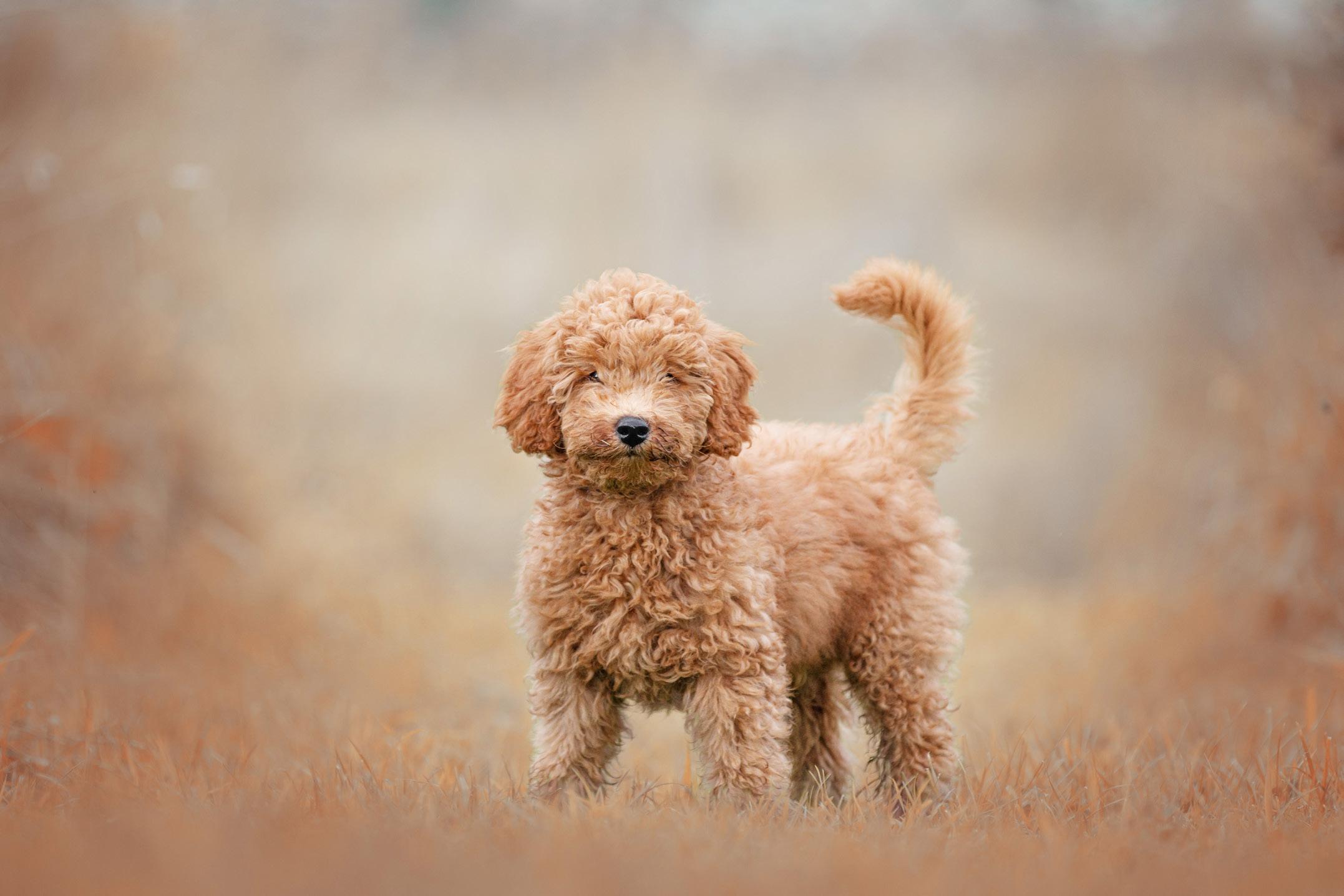
LABRADOODLE
A cross between a Labrador Retriever and a Poodle, Labradoodles can inherit the hypoallergenic coat qualities of the Poodle. They are often recommended for allergy sufferers, but it's important to note that their coats can vary, so individual dogs may be more or less suitable for allergic individuals.
8
DQ | 8C 36 DOG HEALTH
WHAT IS DANDER?
Dander refers to tiny flakes of skin shed by animals, including dogs, cats, birds, and other pets. While many people commonly associate pet allergies with animal fur or hair, it is often the dander, not just the hair, that triggers allergic reactions in sensitive individuals.
Dander is composed of proteins found in animal skin, saliva, and urine. These proteins can cause allergic responses when they come into contact with a person's respiratory system or skin. Dander is particularly challenging because it is microscopic, lightweight, and can remain airborne for a long time. It also tends to cling to furniture, bedding, fabrics, and other surfaces in a home.
Because dander can be spread through the air and accumulate on surfaces, it can be difficult to completely eliminate from an environment. Regular cleaning, air filtration systems, and maintaining specific pet-free areas can help reduce exposure to dander in households where allergies are a concern.
Understanding the role of dander in allergies is crucial for people who are allergic to animals but want to have pets. Opting for pets that are considered hypoallergenic—those that shed less skin and hair—can be a viable option for reducing the risk of allergic reactions.
CONSIDERATIONS FOR ALLERGY SUFFERERS
Individual variation: Even within breeds considered hypoallergenic, individual dogs may produce more or less dander. Potential owners should spend time with specific dogs to see how they react before making a commitment.
Environment management: Keeping the home environment clean by frequently washing pet bedding, using air purifiers, and vacuuming with HEPA filters can help minimise allergens.
Regular grooming: Regularly grooming the dog, including brushing and bathing, can help reduce the amount of dander and loose hair that spreads through the home.
CONCLUSION
It's important to remember that hypoallergenic does not mean allergen-free. People with severe allergies should consult with their doctor before deciding to bring a dog into their home, even if the dog is from a breed typically considered hypoallergenic. We advise that prospective pet owners spend time with a breed, or better yet, the specific individual dog, to ensure compatibility before making a decision. The good news is that with the right breed and precautions, almost all those with allergies can enjoy the companionship of a furry friend.
DQ | 8C 37 DOG HEALTH

DQ | 8C 38 DOG HEALTH
HEAR, HEAR!
UNDERSTANDING AND MANAGING EAR HEALTH PROBLEMS IN DOGS

Ear health is a critical aspect of canine wellness, often overlooked until problems become evident. Dogs, especially those with floppy ears or those who love swimming, are particularly susceptible to ear issues. Common ear problems can range from infections to mites, and understanding these conditions can help dog owners prevent serious complications and ensure their pets remain comfortable and healthy.
DQ | 8C 39 DOG HEALTH
COMMON EAR PROBLEMS IN DOGS
Several ear health issues can affect dogs, each with distinct causes and symptoms:
OTITIS EXTERNA:
• Description: This is an inflammation of the outer ear canal, which is one of the most common ear issues in dogs.
• Symptoms: Itching, redness, odour, discharge, and frequent shaking or scratching of the head.
• Causes: Allergies, bacterial or yeast infections, ear mites, excessive moisture, and accumulation of wax.
EAR MITES:
• Description: Ear mites are tiny parasites that live in the ear canal.
• Symptoms: Intense itching, redness, and a coffee ground-like discharge.
• Treatment: Requires antiparasitic medication prescribed by a vet.
YEAST INFECTIONS:
• Description: Yeast infections in the ear are caused by the overgrowth of fungi, typically Candida.
• Symptoms: Brown, yellow, or bloody discharge, strong odour, redness, and swelling.
• Causes: Often occur in dogs with allergies or those with floppy ears that trap moisture.

DQ | 8C 40
HEALTH
DOG

FOREIGN BODIES:
• Description: Grass seeds, burrs, and other outdoor debris can become lodged in a dog's ear canal.
• Symptoms: Sudden onset of head shaking, pawing at the ear, and anxiety.
• Treatment: Veterinary removal is necessary to prevent further irritation or injury.
OTITIS MEDIA:
• Description: Otitis media is an inflammation or infection of the middle ear, which is the space located just behind the eardrum.
• Symptoms: Pain, head tilting and shaking, balance problems
or circling, discharge and facial paralysis, head tilting and shaking.
• Causes: In dogs, otitis media often occurs as a progression from otitis externa, although it can also arise from respiratory infections, foreign bodies or trauma.
• Treatment: Medication is usually necessary, and this can be given topically (through eardrops) or systemically. In severe cases where complications have occurred, or there is a heavy build-up of debris or fluid, surgical intervention may be required.
DQ | 8C 41 DOG HEALTH

OTITIS INTERNA:
• Description: Otitis interna refers to inflammation or infection of the inner ear. This is less common than otitis externa or otitis media.
• Symptoms: Head tilting, circling or rolling, involuntary eye movements, loss of balance, unsteady gait, nausea and vomiting, hearing loss, and pain.
• Causes: Untreated otitis media that spreads to the inner ear, head
trauma, autoimmune diseases or severe systemic infections.
• Treatment: Treatment includes antibiotics or antifungals administered by mouth or by injection, supportive care (like anti-nausea medications), antiinflammatory medication, surgery and rehabilitation exercises for balance.
DQ | 8C 42
HEALTH
DOG

PREVENTION AND CARE
Maintaining your dog's ear health involves regular care and monitoring:
• Regular checks: Examine your dog's ears weekly for signs of irritation, infection, or wax buildup. The inside of the ear should be pale pink with no excessive dirty build-up or smell.
• Cleaning: Use a vet-recommended
ear cleaner. Apply the cleaner to a cotton ball and gently wipe out the ear until clean. Avoid inserting cotton swabs into the ear canal.
• Drying: Always dry your dog's ears thoroughly after swimming or bathing to prevent moisture accumulation, which can lead to infections.
• Grooming: For breeds with heavy or floppy ears, regular grooming can ensure better air circulation around the ear canal.
DQ | 8C 43 DOG HEALTH
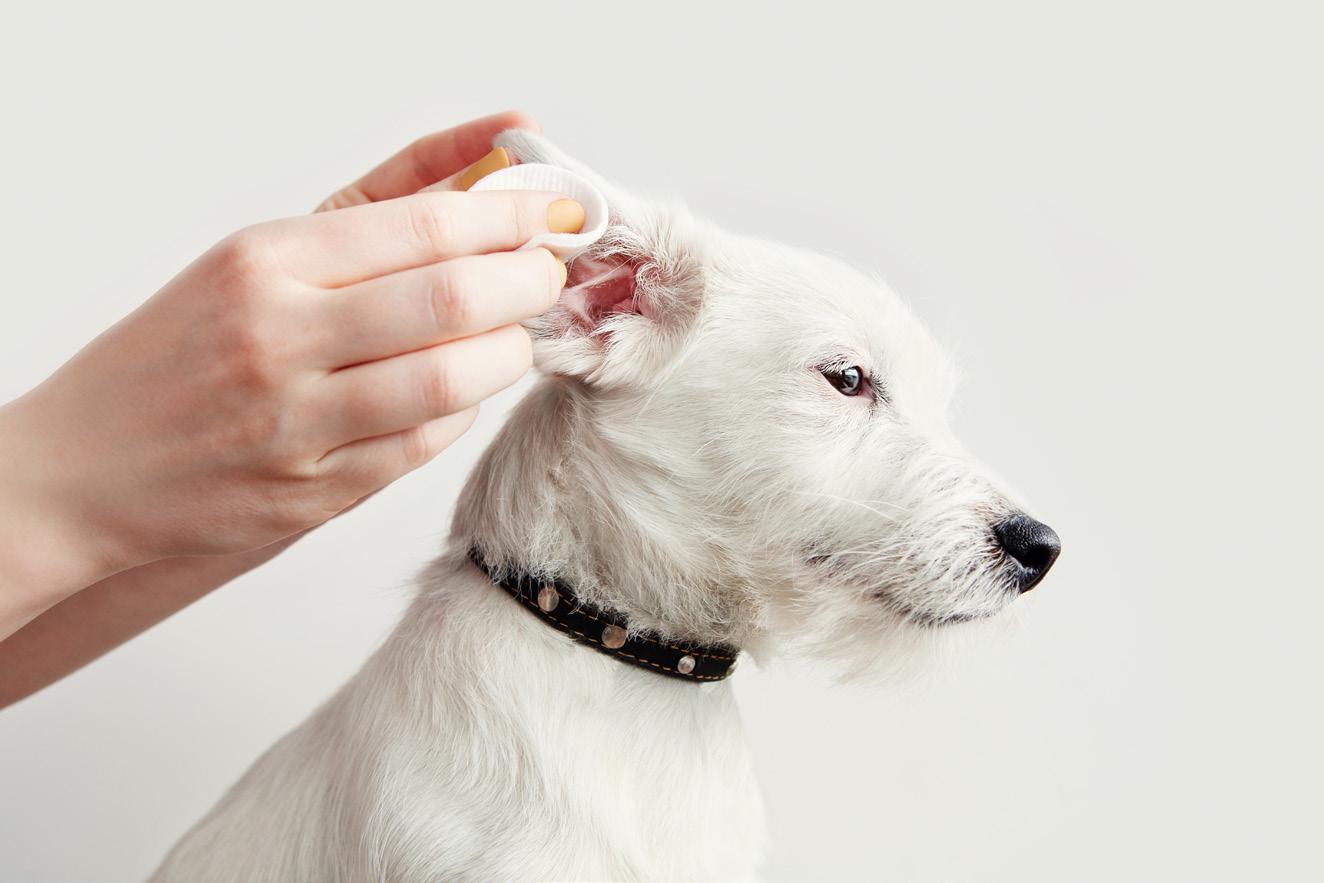
TREATMENT
Treatment depends on the specific condition and its severity:
• Medication: Bacterial infections require antibiotics, while antifungal drugs are necessary for yeast infections. Both may require topical, oral or injectable medications as prescribed by a vet.
• Cleaning and care: Regular cleaning with medicated solutions may be necessary to resolve some infections.
• Follow-up: Revisits to the vet to ensure the infection is cleared up completely; otherwise, chronic problems can develop.
DQ | 8C 44
DOG HEALTH
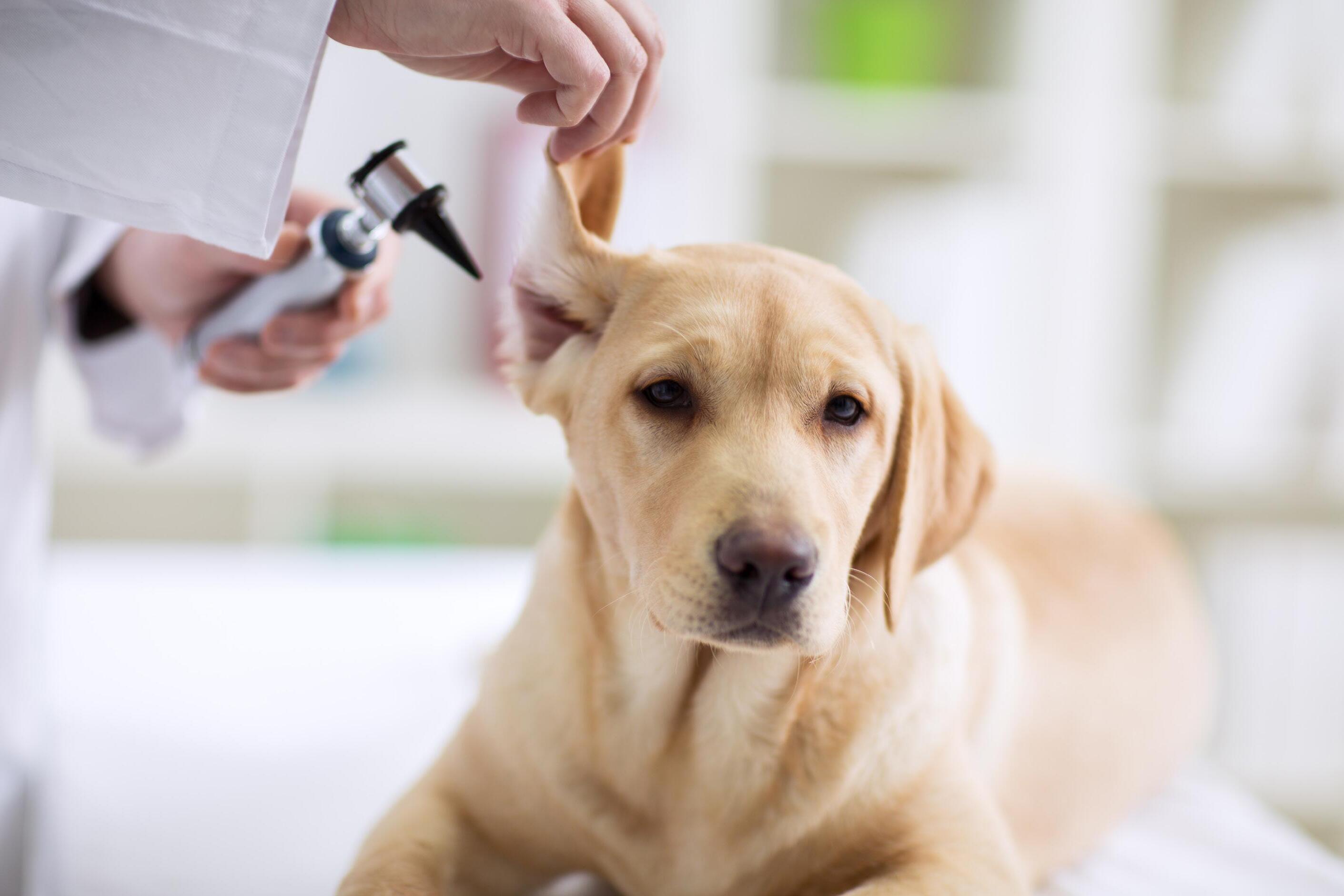
WHEN TO SEE A VET
Consult your vet if you notice any of the following:
• Persistent scratching or pawing at the ears.
• Bad odour or discharge from the ears.
• Redness or swelling in the ear canal.
• Signs of pain or discomfort when the ears are touched.
TAKE HOME MESSAGE
Proactive attention to ear health can prevent many common issues afflicting dogs. Regular cleaning, monitoring, and immediate response to potential problems are critical components of effective ear care. Always consult your vet when in doubt, as early detection and treatment can prevent discomfort and more severe health issues in your pet. Keeping your dog's ears clean and dry is the cornerstone of good ear health management.
DQ | 8C 45
DOG HEALTH
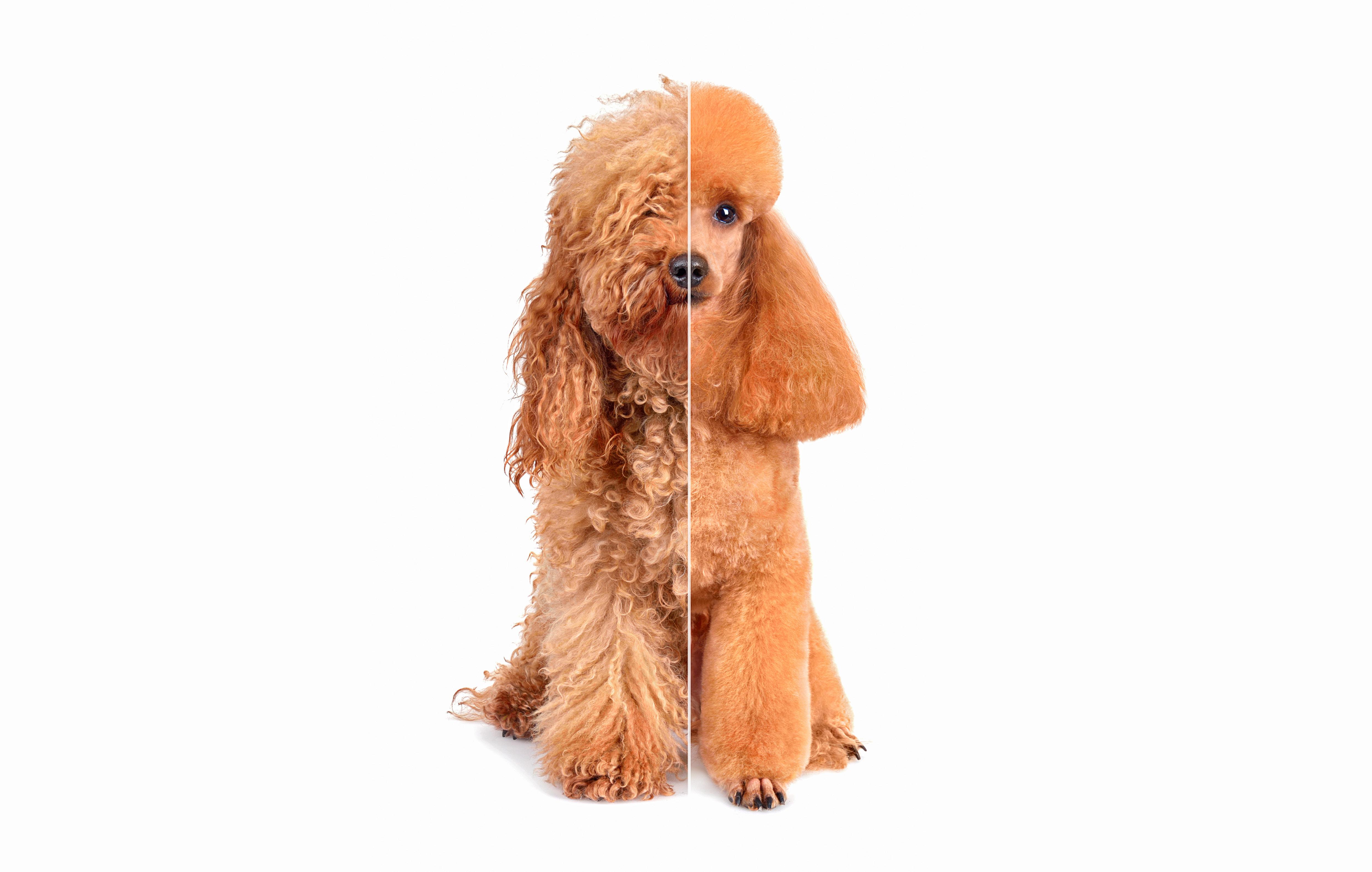
DIY DOG GROOMING
ESSENTIAL TIPS AND TRICKS FOR AT-HOME CARE
Keeping your dog well-groomed is crucial not only for their appearance but also for their overall health and well-being. While professional grooming services offer fantastic results, they can sometimes be expensive or inconvenient. Fortunately, you can perform many grooming tasks at home with some basic tools and knowledge. This article provides practical DIY grooming tips and tricks to keep your furry friend looking and feeling their best.
DQ | 8C 46 DOG GROOMING
1. Gathering the right tools Before you begin, make sure you have the right grooming tools. This is our basic list:
• Brushes and combs: Depending on your dog's coat type, you may need several, such as a slicker
• Nail clippers: Dog-specific nail clippers or a grinder.
• Ear cleaning supplies: Cotton balls or pads and a veterinarianapproved ear cleaner.
• Toothbrush and toothpaste: Canine-specific products for dental


DQ | 8C 47 DOG GROOMING

48 DOG GROOMING


Combs for dogs come in various tooth widths, including fine, medium, and coarse, and can have different purposes based on the spacing of
Removing tangles and debris from the fur, checking for fleas, and providing a finishing touch to ensure no mats are left behind
All types of coats, with the choice of comb (fine, medium, coarse) depending on the fineness of the dog's fur. A fine-tooth comb is suitable for smooth, short-haired breeds to remove small debris and fleas, while a wide-tooth comb is better for dogs with thick, heavy
Always comb gently to avoid pulling on the skin, especially when working out mats or tangles. A mat splitter or detangler can be used before combing for tough mats.
CHOOSING THE RIGHT BRUSH
Consider the following when choosing which brush to use:
Coat length and type: Consider the length and texture of your dog's coat. Long-haired and double-coated dogs may benefit from a combination of these tools.
Skin sensitivity: If your dog has sensitive skin, be extra cautious when using a slicker brush and consider using a pin brush for routine grooming.
Purpose of grooming: Decide if you're removing tangles or mats or just doing general grooming. This will dictate which brush and other tools you will require.
49 DOG GROOMING
2. Regular brushing
Regular brushing is essential, especially for dogs with long or dense coats.
• Benefits: Brushing removes dead hair, dirt, and dander and helps prevent matting.

• Frequency: Short-haired dogs may only need weekly brushing, while long-haired breeds might require daily attention.
• Technique: Always brush in the direction of hair growth, and be gentle to avoid skin irritation.
DQ | 8C 50
DOG GROOMING


3. Bathing basics
Bathing your dog at home can be a bonding experience, but it's essential to do it right.
• Preparation: Brush your dog thoroughly before bathing to remove tangles and mats.
• Bathing: Use lukewarm water and wet your dog thoroughly. Apply
shampoo and massage it into the coat; rinse well to remove all soap, as residue can irritate the skin.
• Drying: Towel dry your dog gently and then use a hairdryer on a cool setting (if your dog is not afraid of the noise). Keep the dryer moving to avoid heat concentration.
DQ | 8C 51 DOG GROOMING

4. Nail trimming
Trimming your dog's nails is vital to prevent pain and joint problems associated with overgrown nails.
• Frequency: Typically, nails need trimming every 3-4 weeks, but this can vary.
• Technique: Be cautious of the quick, a blood vessel inside the nail, which can cause bleeding if cut. If unsure, just trim the tips or ask a vet or groomer to show you the proper technique.
5. Ear cleaning
Keeping your dog's ears clean is important, especially for breeds prone to ear infections.
• Technique: Apply a few drops of ear cleaner into the ear canal, massage the base of the ear gently, and then let your dog shake its head. Wipe away loosened debris and wax with a cotton ball or soft cloth.
DQ | 8C 52 DOG GROOMING
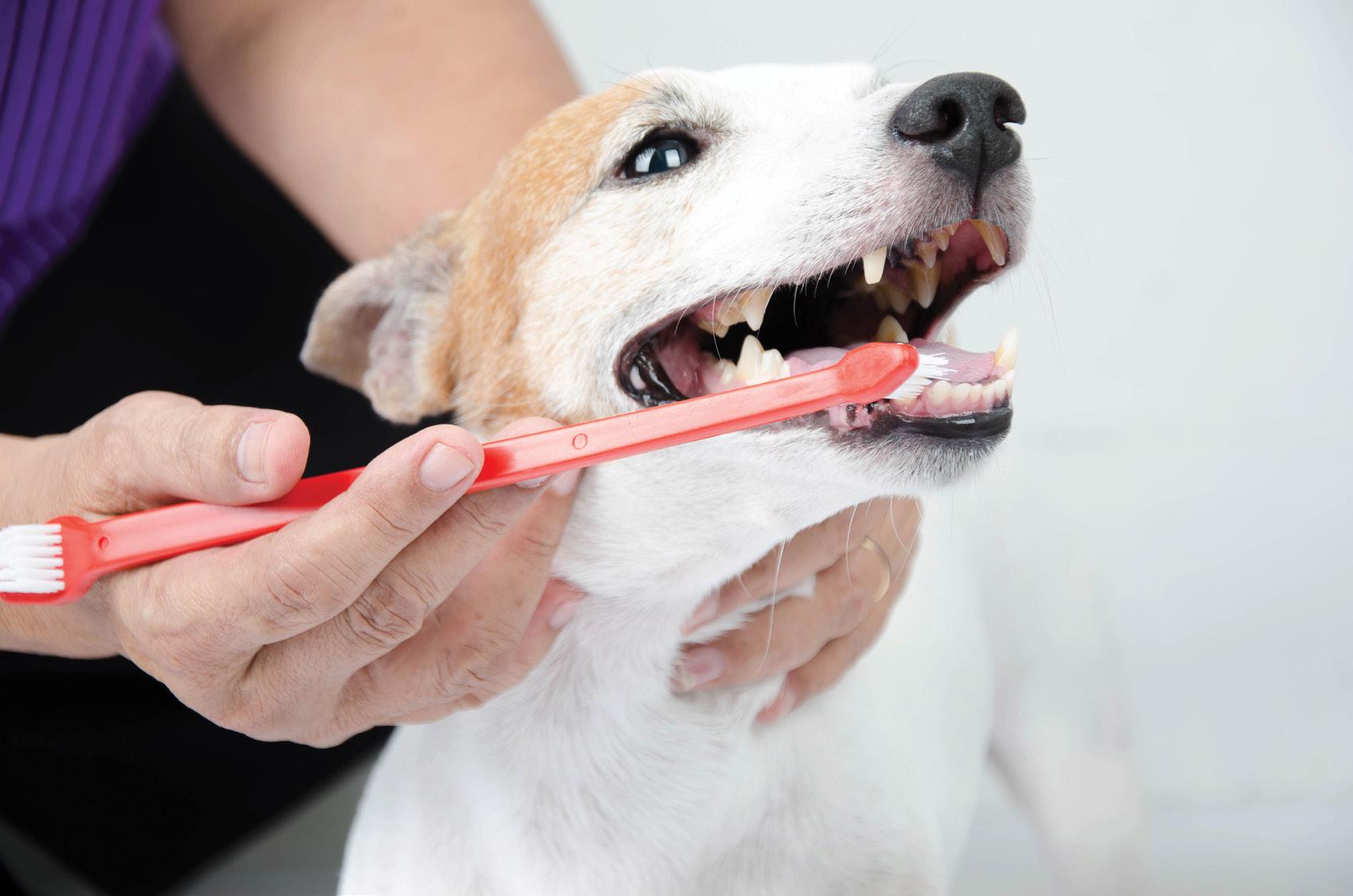
6. Dental care:
Oral hygiene is often overlooked in dogs but can significantly impact their health and quality of life.
• Routine: Brush your dog's teeth regularly using canine toothpaste. Start slowly and gradually increase the brushing as your dog gets used to the process.
DIY GROOMING
DIY dog grooming can be a rewarding way to care for your pet, saving you money and helping to strengthen your bond. With the right tools and a bit of practice, most dogs can enjoy grooming sessions at home, making them look and feel their best. Always introduce grooming activities gradually and with plenty of praise and treats, ensuring a positive experience for your furry friend.
DQ | 8C 53 DOG GROOMING

MASTERING THE BASICS
THE IMPORTANCE OF OBEDIENCE TRAINING FOR DOGS
DQ | 8C 54
DOG TRAINING
Obedience training is more than just teaching your dog to sit or stay; it's a fundamental aspect of responsible dog ownership. Not only does it provide a way to communicate effectively with your pet, but it also enhances your bond, ensures their safety, and improves their overall behaviour. Whether you're training a puppy or an adult dog, understanding the principles of obedience training can make the experience both successful and rewarding.
WHY OBEDIENCE TRAINING MATTERS
Obedience training is crucial for several reasons:
• Safety: A well-trained dog responds reliably to commands, making him safer to handle in all situations.
• Socialisation: Training classes offer essential dog-to-dog and dogto-human socialisation, helping to prevent behavioural problems related to fear or aggression.
• Mental stimulation: Learning commands and tricks keeps a dog's mind active, which can significantly reduce instances of boredom and related destructive behaviours.
• Stronger bond: The training process builds trust and mutual respect between you and your dog, enhancing your relationship.
DQ | 8C 55 DOG TRAINING

THE KEY ELEMENTS OF OBEDIENCE TRAINING
The following four elements make up obedience training:
1. BASIC COMMANDS
There are a few basic commands that form the foundation of obedience training:
• Sit: This is often the first command taught. It instructs the dog to sit down and is fundamental for maintaining control in various situations.
• Stay: This command teaches the dog to remain in a specific place and not move until given a release command. It is crucial for
managing behaviour and ensuring safety in diverse settings.
• Come: This command calls the dog to return to you, which is crucial for managing off-lead situations. This is perhaps the most important command of all, as it can prevent a dog from running into dangerous situations.
• Heel: This command keeps the dog walking by your side, which is useful for maintaining control while walking on a lead.
• Down: This command gets your dog to lie down and promotes calmness.
DQ | 8C 56
DOG TRAINING
2. SOCIALISATION
Socialisation is a key element of obedience training. It exposes your dog to various environments, sounds, people, and other animals, which helps to reduce fearfulness and aggression. It also helps your dog learn appropriate social behaviours with humans and other dogs.
3. BEHAVIOURAL CORRECTIONS
Obedience training allows you to address specific behavioural issues such as excessive barking,
chewing, jumping up on people, and aggression. It uses positive reinforcement techniques to encourage good behaviour and discourage unwanted actions.
4. SAFETY
Obedience training enhances your dog's responsiveness to commands in potentially dangerous situations, such as approaching traffic or encountering wildlife. This teaches them impulse control, which is crucial for preventing accidents and injuries.

DQ | 8C 57 DOG TRAINING

TECHNIQUES FOR EFFECTIVE OBEDIENCE TRAINING
• Positive reinforcement: Positive reinforcement involves rewarding desired behaviours with treats, praise, or play, which encourages the dog to repeat those behaviours. Clicker training is the most commonly used form of positive reinforcement training, which uses a clicker device to mark the exact moment a desired behaviour is performed.
• Timing: Rewards should be given immediately after the desired behaviour to help the dog associate the action with the reward. NOTE: This sounds simple, but it can be remarkably difficult in practice. The only way to get better at timing rewards is through practice.
• Consistency: Use the same commands and rewards to avoid confusing your dog. Consistency in training sessions also helps reinforce learning.
• Patience: Dogs learn at different rates. Patience is vital to building a positive learning environment.
DQ | 8C 58
DOG TRAINING

SETTING UP FOR SUCCESS
• Health check: Ensure your dog is physically healthy for training sessions. Discomfort or pain can hinder their ability to focus and learn.
• Choose the right environment: Start in a quiet environment with few distractions. Gradually introduce more distractions as your dog becomes proficient at each command.
• Professional help: Consider enrolling in a class or hiring an experienced trainer, especially if you're new to dog training or dealing with specific behavioural issues.
DQ | 8C 59 DOG TRAINING

DOG TRAINING
ADVANCED TRAINING
Once your dog has mastered the basics, you can move on to more advanced training, such as off-leash skills, agility training, or therapy dog training. These activities can provide additional mental stimulation and fun for both you and your dog.
CONCLUSION
Obedience training is an essential part of dog ownership that benefits both the dog and its owner. By investing time in training, you ensure your dog is well-mannered but, most importantly, safe. Remember, the goal of training is to create a happy, healthy relationship based on mutual respect and understanding. With the right approach, obedience training can be rewarding for you and your dog.

DQ | 8C 61
DOG TRAINING

DQ | 8C 62 DOG BEHAVIOUR

BARKING MAD
HOW TO TRAIN YOUR DOG TO REDUCE EXCESSIVE BARKING
Excessive barking can be a frustrating and challenging behaviour for dog owners to manage. While barking is a natural form of communication for dogs, it's important to address the behaviour effectively when it becomes frequent
or disruptive. Training your dog to reduce excessive barking not only helps create a more peaceful environment but also enhances the bond between you and your pet by addressing their needs and behaviours constructively.
DQ | 8C 63 DOG BEHAVIOUR

UNDERSTANDING THE CAUSES OF EXCESSIVE BARKING
Before you can effectively train your dog to curb their barking, it's essential to understand why they are barking excessively. Common reasons include:
1. Attention-seeking: Dogs often bark to get attention from their owners.
2. Boredom or loneliness: Lack of mental and physical stimulation can lead to barking.
3. Territorial alert: Barking at passersby or other animals encroaching on their perceived territory.
4. Anxiety or fear: Some dogs bark excessively in response to anxiety-provoking or fearful situations.
5. Response to other dogs: Barking in response to hearing other dogs bark.
DQ | 8C 64
DOG BEHAVIOUR
EFFECTIVE TRAINING STRATEGIES TO REDUCE BARKING
Once you identify the reason behind your dog's excessive barking, you can implement specific training strategies tailored to address the root cause.
1. DESENSITISATION AND COUNTERCONDITIONING
For dogs that bark due to fear or territorial behaviour, desensitisation can help. Gradually introduce your dog to the stimulus that causes

barking at a distance where they do not react aggressively, and slowly decrease the distance as your dog becomes more comfortable, rewarding calm behaviour.
2. ATTENTION-CONTROL TRAINING
If your dog barks for attention, it's important to teach them that barking won't get them what they want. Instead, ignore the barking and reward quiet behaviour with attention or treats. Establish a command like 'quiet' to signal that barking should stop.
DQ | 8C 65
DOG BEHAVIOUR
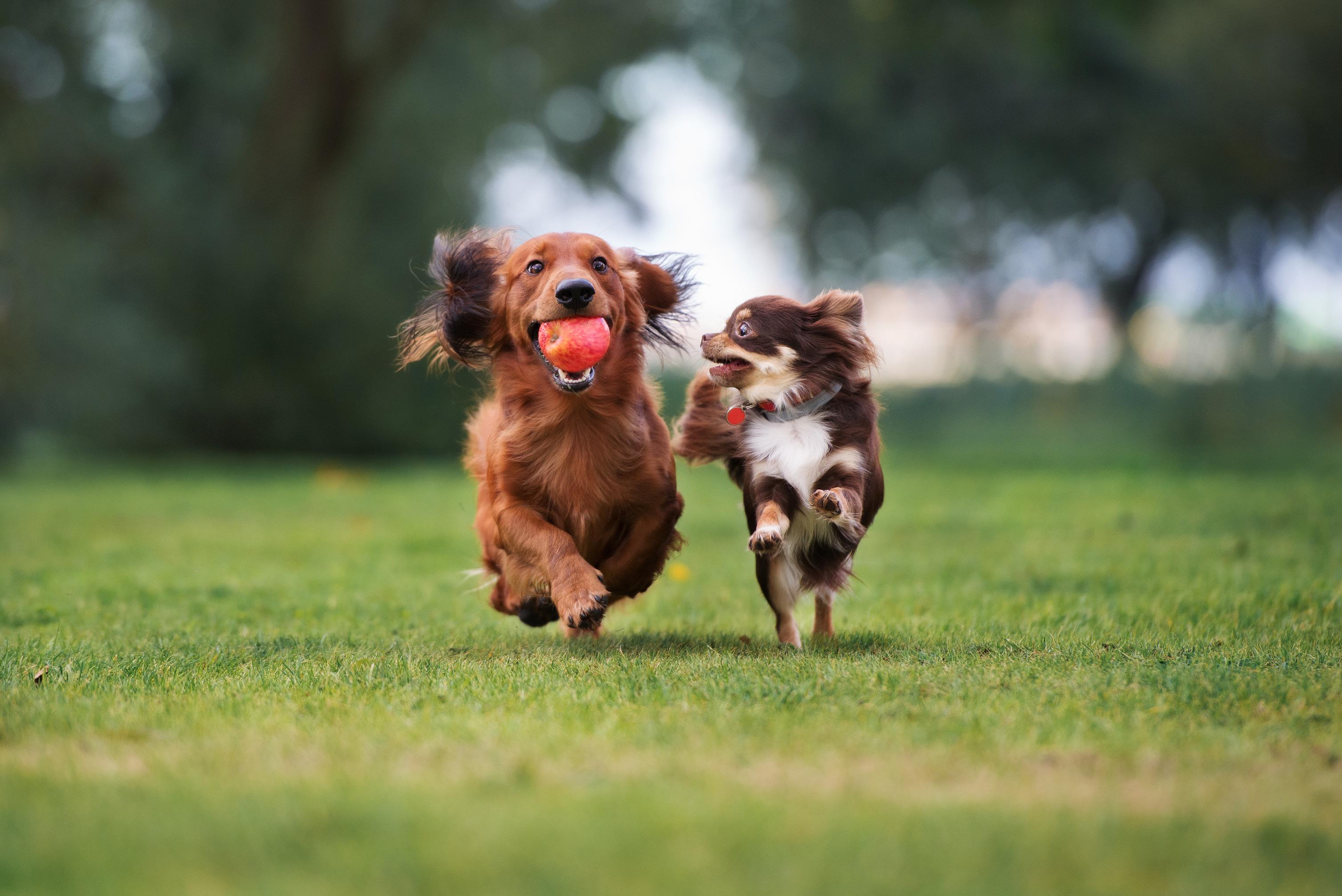
Increasing exercise, playtime, and mental stimulation is key for dogs barking out of boredom. Provide interactive toys, engage in regular play sessions, and consider sports like agility or obedience training to keep their mind and body active.
Consistency is crucial in any form of dog training. Ensure all family members apply the same rules and commands to avoid confusing your dog. Patience is also vital, as changing behaviour takes time.
DQ | 8C 66
BEHAVIOUR
DOG

ADDITIONAL TIPS
• Reward quiet behaviour: Regularly reward your dog when he is quiet. This positive reinforcement will help him understand that being quiet brings rewards.
• Avoid punishment: Yelling or punishing your dog for barking can increase anxiety and worsen the behaviour.
• Consult a professional: If the barking persists despite your best efforts, consider consulting a professional dog trainer or behaviourist for personalised guidance.
FINAL THOUGHTS
Training your dog to reduce excessive barking is a process that requires understanding, patience, and consistency. By addressing the underlying causes of barking and using appropriate training techniques, you can help your dog learn to communicate in ways that are healthy and appropriate. Remember, the goal is to improve your dog's well-being and enhance your relationship, not just to stop the noise.
DQ | 8C 67 DOG BEHAVIOUR
? YOUR DOG QUESTIONS ANSWERED
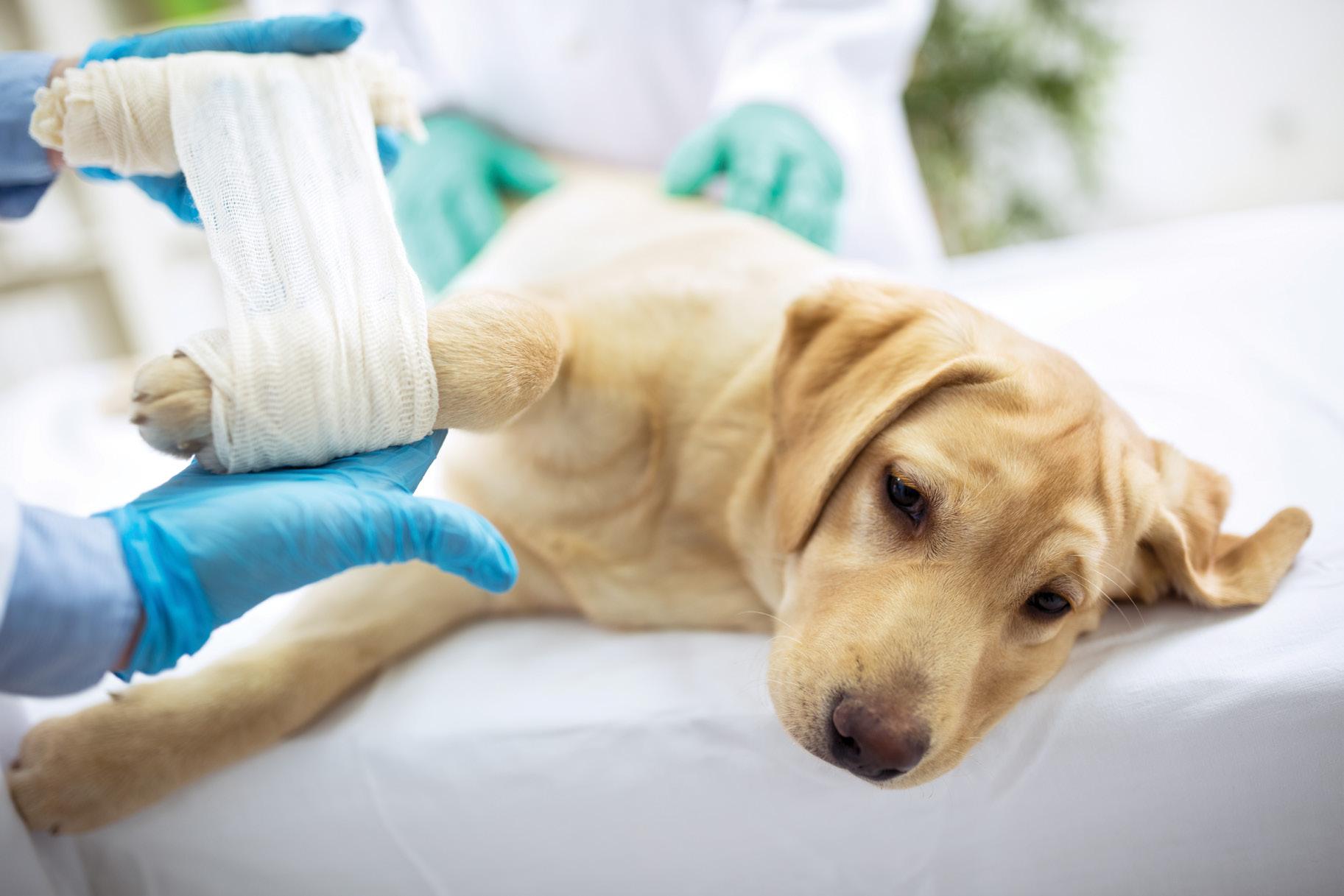
• They will carefully examine the affected paw and check for signs of pain, swelling, or deformity.
If your dog breaks a toe, the vet will follow several steps to ensure proper diagnosis and treatment. Here's what typically happens:
STEP 1: Assessment and physical examination:
• The vet will begin by asking about how the injury occurred and any symptoms your dog has shown.
STEP 2: Radiographs (X-Rays):
• The vet will likely recommend an X-ray of your dog's foot to confirm the diagnosis of a broken toe and assess the severity of the fracture.
• This helps determine the exact location and type of the fracture, which is crucial for deciding on the appropriate treatment plan.
DQ | 8C 68
What will a vet do if a dog breaks his toe?
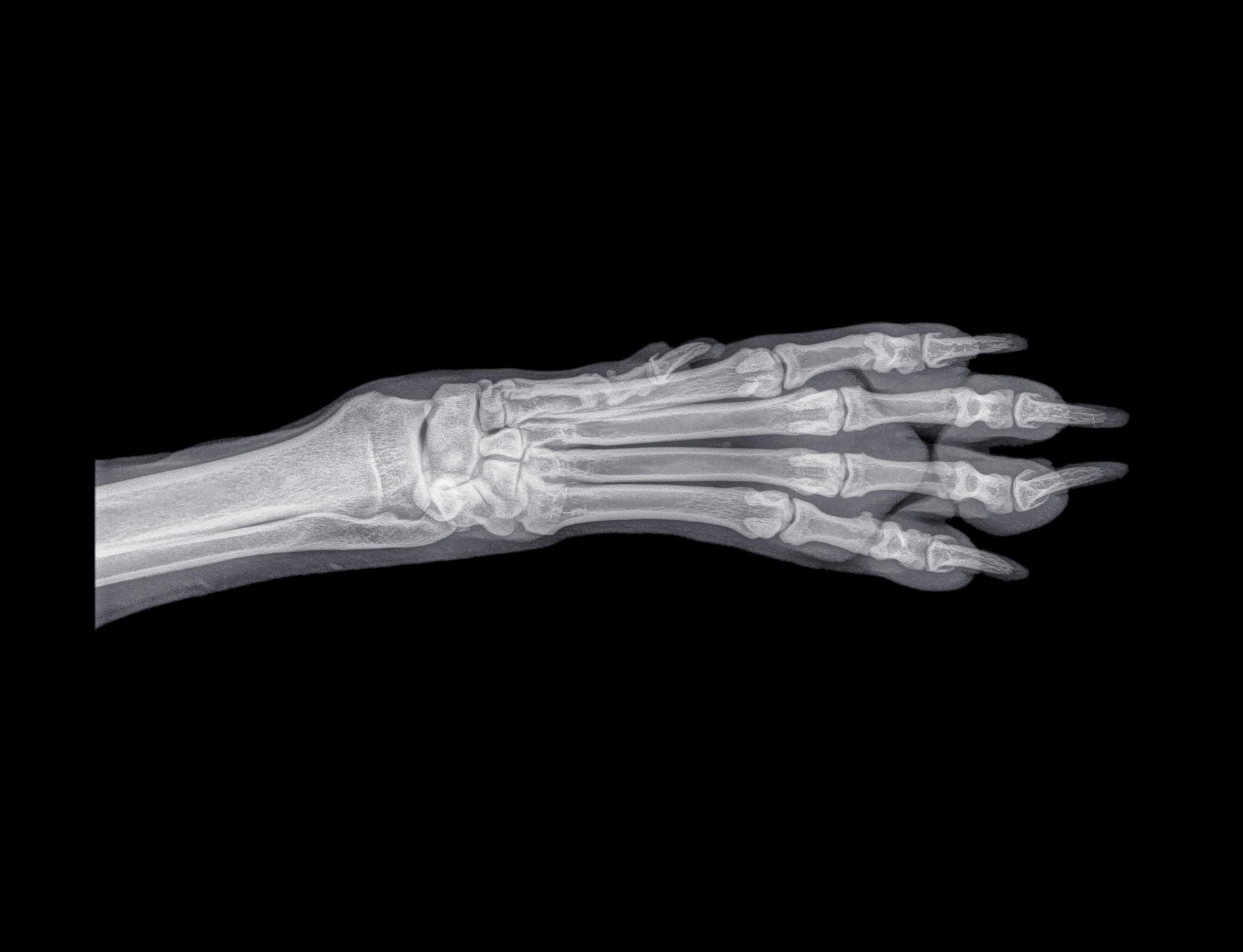
STEP 4: Stabilisation and immobilisation:
• Depending on the fracture's severity, the vet may use a splint or bandage to immobilise the toe and keep it in place to aid healing. In some cases, a cast might be applied.
• Keeping the bandage or splint dry and clean is essential to avoid complications like infections or skin irritation.
STEP 5 (in some cases only): Surgery:
• Surgical intervention might be necessary if the fracture is complicated or involves multiple fractures that cannot be healed with immobilisation alone.
• Surgery typically involves using pins, wires, or plates to stabilise the bones.
for your dog at home, which may include limiting exercise, keeping your dog confined to a small area to prevent further injury, and administering medication to manage your dog's pain.
STEP 7: Rehabilitation:
Once the bone has sufficiently healed, your vet might recommend specific exercises or refer you to a veterinary physiotherapist to restore function and strength to the injured toe and ensure your dog can walk comfortably again.
Throughout this process, it's essential to closely monitor your dog's progress and follow the vet's recommendations to ensure a smooth recovery. If you notice any changes in your dog's behaviour, pain level, or bandage condition, contact your vet immediately.
DQ | 8C 69

Why are people against rehoming puppies from the same litter together?
The advice against rehoming puppies together, often referred to as 'littermate syndrome', is based on concerns that puppies raised together may develop several behavioural issues:
1. Overbonding: Puppies rehomed together can form an intense bond, often at the expense of their connection with their human family members.
2. Dependency issues: When two puppies from the same litter are raised together, they may become overly dependent on each other
for security and comfort. This can lead to problems when they need to be separated, for instance, for vet visits or grooming. Such separations can cause high levels of anxiety and distress.
3. Difficulty training: Training two puppies at once can be particularly challenging. Each puppy needs individual attention to learn effectively. Training them together can lead to distractions and less effective learning, as they may pay more attention to each other than the trainer.
4. Behavioural development: Puppies need to learn how to interact appropriately with a variety of dogs and humans. If they spend
DQ | 8C 70 Q&A

most of their time with their sibling, they might not get enough exposure to other social situations, potentially leading to poor social skills or behaviour problems when interacting with other dogs or people.
5. Competition: Puppies can compete for resources such as food, toys, and human attention. This can lead to aggression or one puppy becoming dominant over the other, complicating their development and the household dynamics.
For these reasons, trainers and behaviourists often recommend that people who wish to have more than one dog consider adopting puppies at different times. This allows the first puppy to be well-trained and adjusted to the new home before introducing a second puppy, thereby reducing the risks associated with littermate syndrome.
DQ | 8C 71
Q&A
Products we love
Shopping fun
PaleoPet Pure 100% Green Beef Tripe for Dogs
Humans may find tripe to be somewhat of an acquired taste (and smell), but dogs absolutely love it! Our tripe has been thoroughly washed and cleaned for you, while retaining all the nutrition of unbleached tripe. It’s easy to serve and store and has so many health benefits for adult and senior dogs especially.

to no carbohydrate, moderate protein and high fat. Tripe can also entice dogs who may not feel all that well and are reticent to eat.
Our 100% Green Beef Tripe (and nothing else) is made from the best quality local beef with no preservatives, colourants or artificial flavourants.
Tripe is rich in trace minerals, while moderate in protein and fat. It is a great complementary raw food addition to a diet for dogs who may struggle with constipation or need foods that are easier to digest.
Tripe doesn’t contain any bone, but still maintains a perfect calcium phosphorus balance, which is rare for animal protein without bone content.
Tripe can be used as a basis for a ketogenic diet for dogs with cancer or epilepsy where one should feed low
The PaleoPet Pure range is FSA Food Safety certified and DALRRD registered. Also available in convenient, pre-frozen 1,5 Kg and 750g tubs or as a box of 12 individually wrapped 100g Patties. The tubs are reusable, recyclable and PBA-free.
Products can be purchased online at www.paleopetpure.com and delivered to your door or bought at selected retailers.
DQ | 8C 72
follow us on Instagram @dogquarterlymag and Facebook dqmagazine
stay tuned for the next issue of
DQ | 8C 74 WWW.DQMAGAZINE.CO.ZA Next magazine issue of available
2024
15 May


